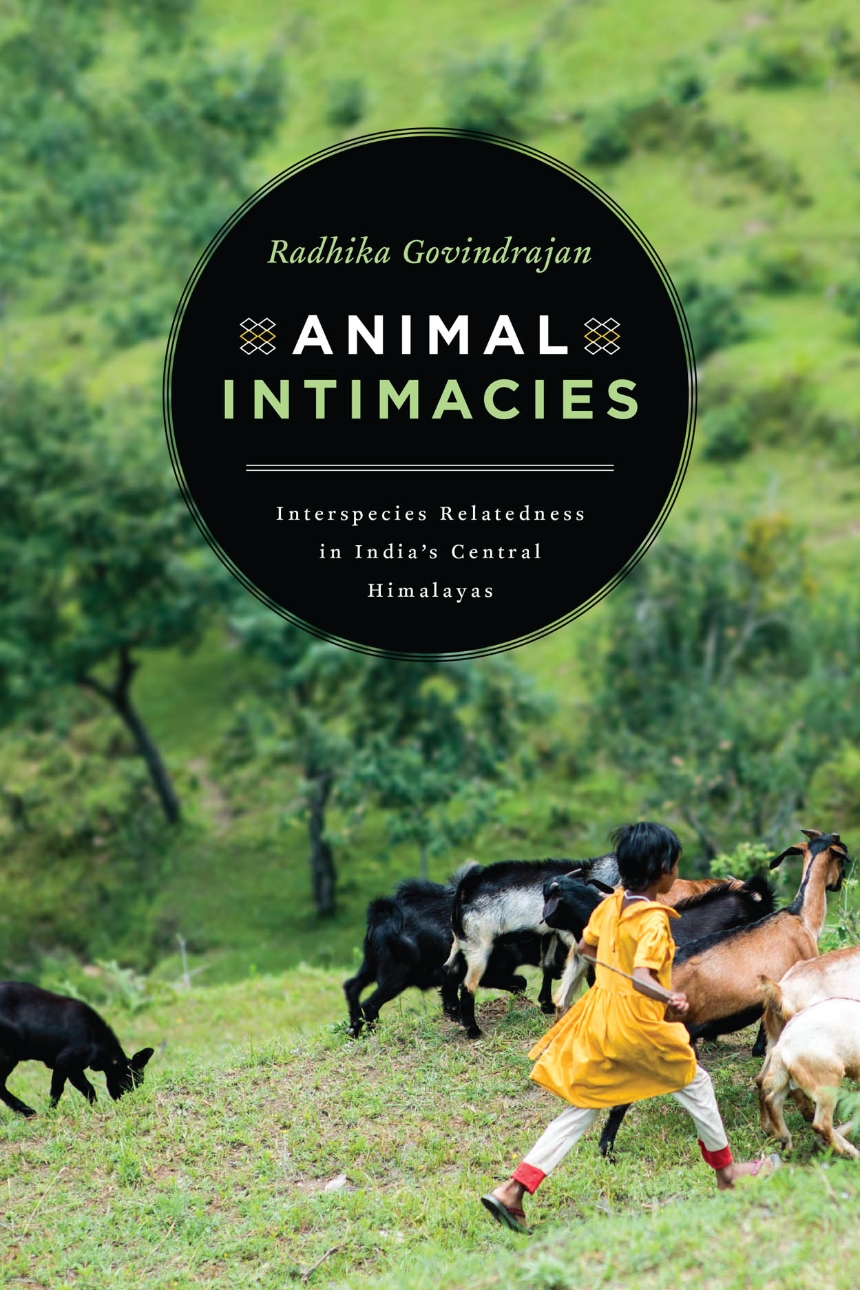Animal Intimacies
Interspecies Relatedness in India’s Central Himalayas
Animal Intimacies
Interspecies Relatedness in India’s Central Himalayas
Built on extensive ethnographic fieldwork in the mountain villages of India’s Central Himalayas, Radhika Govindrajan’s book explores the number of ways that human and animal interact to cultivate relationships as interconnected, related beings. Whether it is through the study of the affect and ethics of ritual animal sacrifice, analysis of the right-wing political project of cow-protection, or examination of villagers’ talk about bears who abduct women and have sex with them, Govindrajan illustrates that multispecies relatedness relies on both difference and ineffable affinity between animals. Animal Intimacies breaks substantial new ground in animal studies, and Govindrajan’s detailed portrait of the social, political and religious life of the region will be of interest to cultural anthropologists and scholars of South Asia as well.
256 pages | 27 halftones | 6 x 9 | © 2018
Anthropology: Cultural and Social Anthropology
Asian Studies: South Asia
Biological Sciences: Behavioral Biology
Sociology: Urban and Rural Sociology
Reviews
Table of Contents
1 Introduction
2 The Goat Who Died for Family: Sacrificial Ethics and Kinship
3 The Cow Herself Has Changed: Hindu Nationalism, Cow Protection, and Bovine Materiality
4 Outsider Monkey, Insider Monkey: On the Politics of Exclusion and Belonging
5 Pig Gone Wild: Colonialism, Conservation, and the Otherwild
6 The Bear Who Loved a Woman: The Intersection of Queer Desires
Epilogue: Kukur aur bagh
References
Index
Awards
Society for the Anthropology of Work and the Committee on the Anthropology of Science, Technology, and Computing of the American Anthropological Association: Diana Forsythe Prize
Honorable Mention
American Institute of Indian Studies: Edward Cameron Dimock, Jr. Prize in the Indian Humanities
Won
Society for Cultural Anthropology: Gregory Bateson Book Prize
Won
